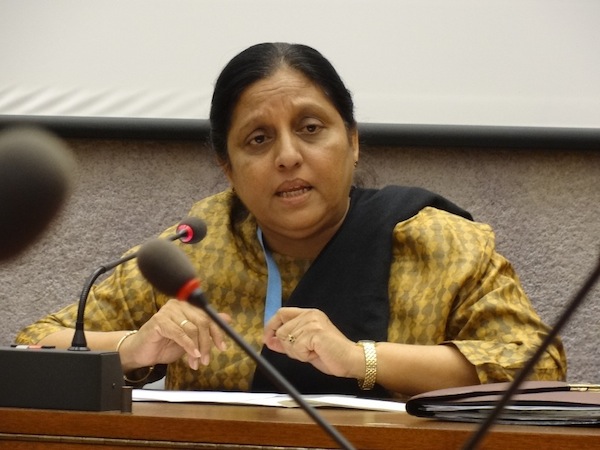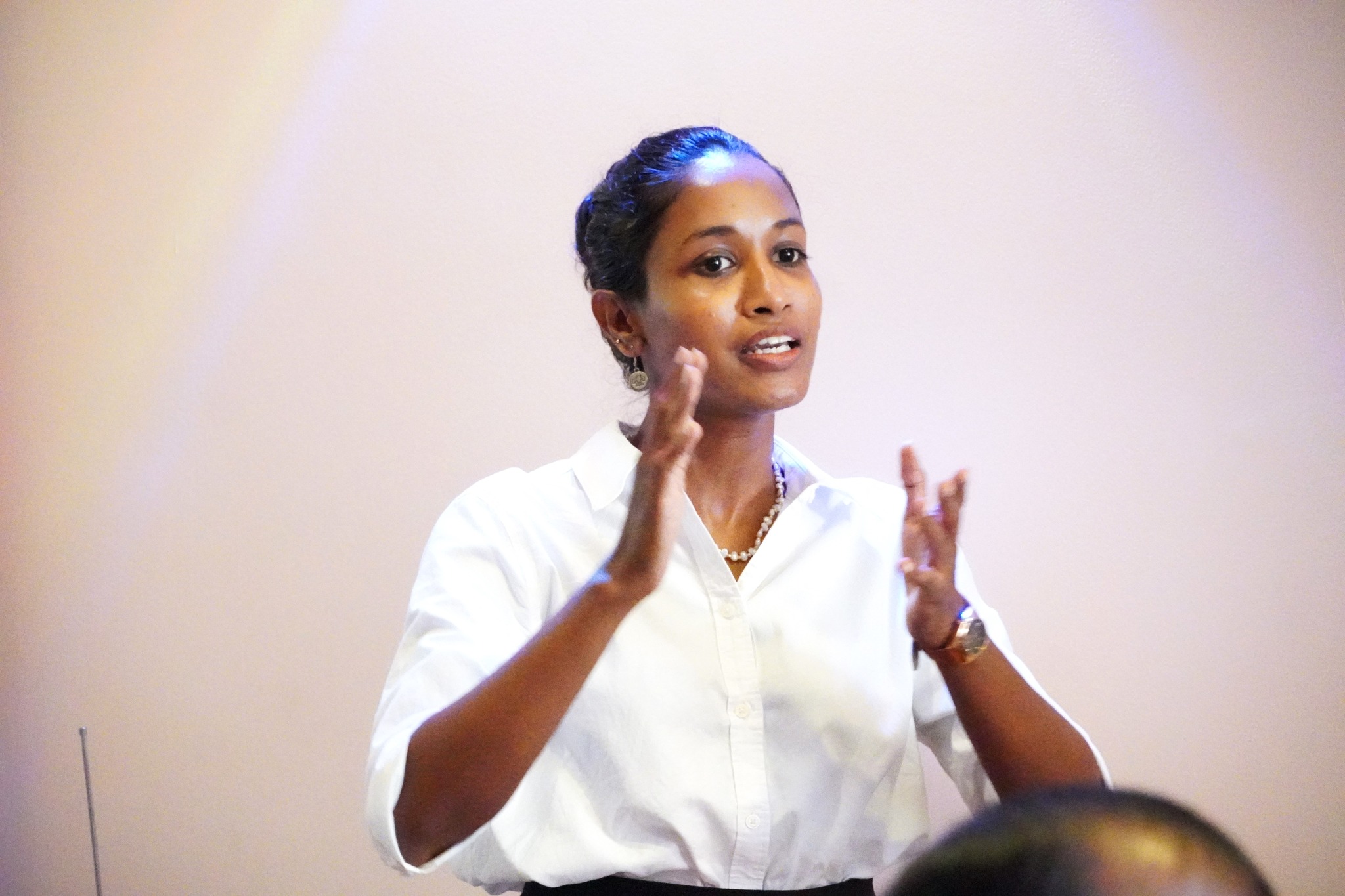 Professor Rohan Samarajiva
Professor Rohan Samarajiva
In 1994, I came to Sri Lanka at the invitation of the late Minister Mangala Samaraweera. It was an opportunity to modernize Sri Lanka’s telecommunications system. Back then, I would return to my wife’s family home at night to avoid the crowds of neighbours bringing letters to secure telephone connections, as I was the Director General of Telecommunications.
Today, the country’s telecommunications system is significantly more advanced. There are more mobile phones than the population within the country. I also contributed to the Sudu Nelum Movement launched by Minister Mangala and participated in the process of drafting a new constitution. However, the bomb attack on the sacred Temple of the Tooth and the opposition to the new constitution disrupted everything.
Resolving the country’s economic, political, social, and cultural crises is possible only through unity and dialogue. Reconciliation must also be viewed from an economic perspective. We should focus more on infrastructure development. Building infrastructure is not feasible for individuals because it is challenging and costly. It is the government’s responsibility. Drinking water and telephone infrastructure cannot be developed individually. In urban areas, clean drinking water is an essential infrastructure due to the difficulty of using wells.
Reconciliation and Water
In the Jaffna Peninsula, only about 3% of the population receives piped water. They use groundwater extracted by pumps. We have heard since childhood that the people of Jaffna collect water from deep wells called Andi Ling. However, after the war ended, electricity came to the Jaffna Peninsula, and they began using motors to extract water. Consequently, there was no longer a need for such wells. Later, a problem arose. Due to water pipes reaching the limestone layer deep in Jaffna’s subsoil, the water that used to flow to the surface mixed with lime and became contaminated. This has led to a complex water crisis in the Jaffna Peninsula.
We have transformed Sri Lanka’s telecommunications system in a successful manner. Discussions have been held about the water crisis faced by the people in various areas, including Jaffna and Kilinochchi. There is hope to resolve the water problem in Sri Lanka. However, it has become evident that Sri Lanka’s water problem cannot be solved without addressing the country’s political instability.
During the ceasefire, a delegation comprising state officials went to Kilinochchi to discuss the water problem in the Northern Province and provide a suitable solution. They met with the representatives from the rebel Liberation Tigers of Tamil Ealam (LTTE) that was ruling the area. The Asian Development Bank had focused on the water problem of the Northern Province due to the complexity of the Northern Province’s water crisis. The plan was to increase the water capacity of the Iranamadu reservoir to supply water to the Northern Province. The LTTE agreed and stated their lack of opposition in writing.
As you travel along the A9 road to the Northern Province, you can see large tank towers and pipes. However, no water flows through them. After the war, the democratic political parties rejected the LTTE’s permission for the Iranamadu reservoir water project. There were several reasons for this rejection. The main reason was that according to the constitution, all irrigation systems and reservoirs belong to the Provincial Council. However, there is an exception to this provision: if the water flows across provincial boundaries, it becomes a central government responsibility. The best example of this is the Kukule River, which brings water from Sabaragamuwa to the Western Province. This water project belongs to the central government.
President Maithripala Sirisena expressed his displeasure regarding the project’s inactivity. If water is sourced from another province, the Iranamadu reservoir becomes a central government asset. There are 17 rivers within the Northern Province that flow to the sea. These rivers remain under the control of the Northern Provincial Council. Criticism of the Iranamadu reservoir being owned by the central government comes not from the people of Kilinochchi but from professionals and engineers. There are other political crises that impact these issues. There is a fear and suspicion among them that if the Iranamadu reservoir becomes a central government asset, the government will resettle Sinhala people in the surrounding villages, creating Sinhala settlements. They might be recalling the experience of creating Sinhala settlements under the Gal Oya project. This incident is enough to clarify the mindset of the people in our country over time. There is a correlation between political reconciliation and building trust among communities.
What are the challenges of reconciliation?
Various governments have established numerous commissions on reconciliation. When considering the administration, expenses, and resources for this purpose, a considerable amount of money has been spent. How are the necessary funds for building these institutions obtained?
In the past, politicians had no problems with money. For the past 75 years, expenditure has exceeded revenue. Developments in Sri Lanka have been funded mainly by loans. During the tenure of U.B. Wanninayake as Finance Minister from 1965 to 1970, government expenditures were covered by revenue. During Mangala Samaraweera’s tenure as Finance Minister in 2018-2019, revenue slightly exceeded expenses sans debt servicing. In every other year, the primary balance showed a deficit.
If government expenses exceed revenue, they take loans. A government has a greater ability to borrow than we do. There are several methods for a government to borrow. Loans taken for expressways are foreign loans. Loans from domestic banks have been taken for projects like drinking water projects. These loans are off-budget. The government has also borrowed heavily from state banks against securities. Such borrowing could lead to the collapse of the banking system. Additionally, a government can obtain financial loans from the central bank, leading to the printing of money. This resulted in 70% inflation in the recent past. The economic harm caused by this inflation is still being faced by the people. Recently, a new central bank act was passed, prohibiting the printing of money. Without such rules and regulations, if we continue with monetary mismanagement, we risk returning to the previous situation of queues and shortages of food, gas, and fuel.
In 2023, 89% of the country’s total revenue was spent on debt and interest payments. Income tax, taxes paid upon earning (PAYE), and taxes from commercial institutions, such as VAT, contribute about 30% of the government’s revenue. Those with a monthly income of over Rs. 100,000 are subject to this income tax. The remaining tax revenue comes from import duties. In 2022, about 86% was spent on government salaries and pensions.
There is a common myth that the government is subject to various conditions imposed by the IMF. This is false. The government presents proposals to the IMF, which then evaluates such proposals. The government ensures the completion of these proposals. The IMF has proposed increasing the tax percentage to 14% of the GDP by 2026. Despite various tax increases, the current tax revenue as a percentage of GDP is 9.5%. When it reaches 14%, what actions will the people who are migrating abroad and protesting take? This is the crisis we are currently facing.
Increasing taxes during an economic crisis is like a bull hitting a man when he is fallen from a tree. I also opposed increasing taxes in a manner that causes further hardship to the people. We object to the increase in indirect taxes to such an extent. The government shows no willingness to reduce expenses. Britain was an aggressive country, but its military is smaller than Sri Lanka’s. Former Speaker and retired army officer Karu Jayasuriya agrees that the number of major generals in Sri Lanka could be reduced, saving significant costs. However, doing this quickly could lead to complex public reactions. The government is gradually reducing it.
Another issue for the government is recurrent expenses. Reducing the expenses allocated to salaries within recurrent expenses is not easy. The government is unwilling to remove people from their jobs. Therefore, there is a significant complex issue in reducing government spending in Sri Lanka. We are forced to continue with an inefficient public service.
In the future, the government will find it difficult to spend easily. The Kotelawala Defence University was granted a Rs. 35 billion loan from the National Savings Bank, Sri Lanka’s most trusted bank, under government guarantees. The government is currently paying its interest. This transaction is also not included in the budget. It was neither presented to Parliament nor debated and approved. The university must pay 369 million rupees monthly. However, they can currently only pay about 50 million rupees monthly to the National Savings Bank. There is a deficit of over 300 million rupees. Ultimately, the people must pay this deficit. If it cannot be paid and loans are unavailable, what can be done? The only option is to increase taxes.
The country is in a deep crisis. Amidst this, an office has been established for the missing persons under transitional justice, and a decision has been made to compensate the victims. At the very least, we must apologize. Compensation has a psychological aspect. Financial compensation should also be provided for damages. Does the government have the resources to provide funds for this? We lack the funds to do good things that we believe should be done as a country. The stress and pressure caused by having a missing or murdered family member are severe. This is true in both the north and the south. If the economic issue cannot be resolved, we will not be able to find the funds to carry out beneficial activities like compensation.


